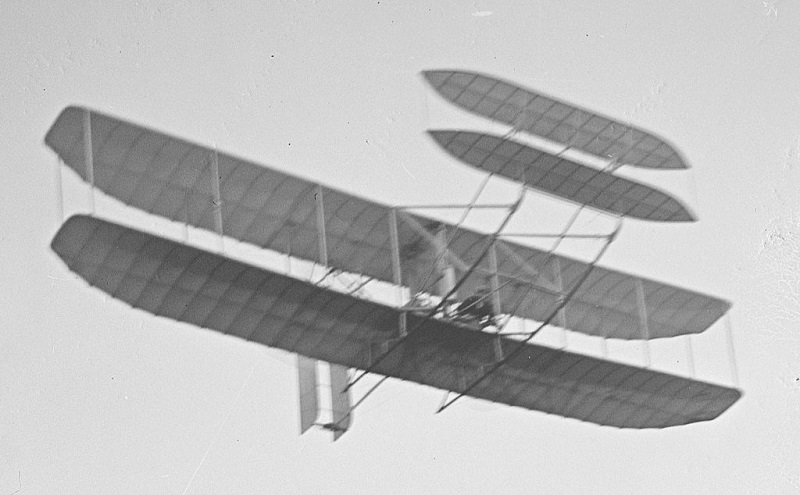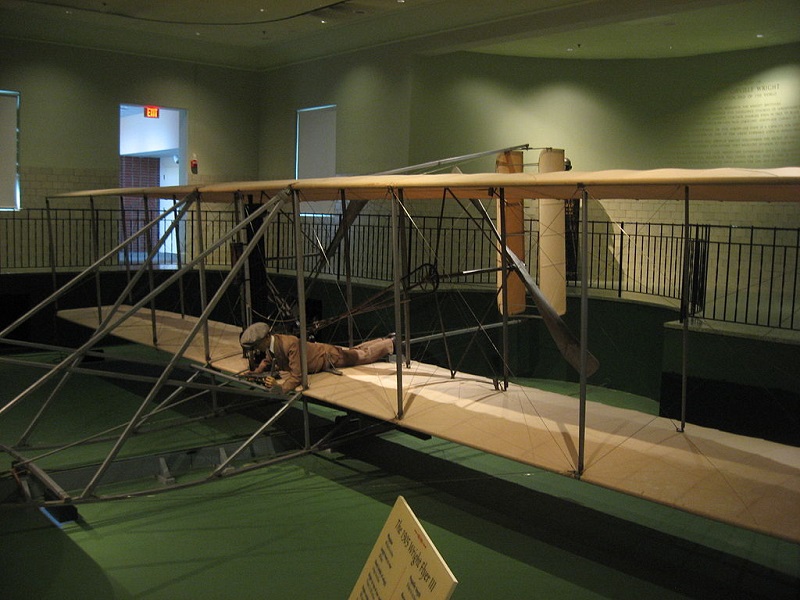University Libraries

Behind the Scenes in Early Aviation: An Interview with Louis P. Christman
By Amy Rohmiller
Dec. 17, 2019, marks the 116th anniversary of powered flight, the achievement of Dayton’s famous aviation pioneers, Orville and Wilbur Wright. The Wright brothers’ legacy is present all over Dayton, from Wright-Patterson Air Force Base to their 1905 Wright Flyer on display at Carillon Historical Park. As a native Daytonian, I’ve always been captivated by the region’s connections to the early history of aviation. I was thrilled to discover that the University Archives and Special Collections at the University of Dayton has its own connection to the Wright brothers through the Wright Brothers – Charles F. Kettering Oral History Project.
The project took place during the 1966-67 academic year. Graduate students in history conducted interviews with individuals associated with the Wrights and Kettering. Interviewees ranged from family members to business associates to other early birds of aviation. I was particularly intrigued by the interview with Louis P. Christman, an engineer and tool designer who restored the 1905 Flyer before it went on exhibit.
Firsthand account
From Christman’s 1967 interview, I learned about what it was like to work with Orville Wright from someone who had done it firsthand. Christman paints a picture of Orville as an engineer who wanted to ensure all the details of his work were exact. He recounts how Orville corrected him on details as small as fixing the end of the wire on one of the plane’s wings into the correct position and correcting the calculation of the length of the rudder by three-quarters of an inch from the published figure.
I had also heard stories of Orville’s reluctance to be a public figure and his desire to maintain as much privacy as he could, but Christman gave me new insights about that. He recounted his unconventional process of working with Orville to make sure the plane was restored as accurately as possible. They would spend afternoons together talking about the airplane, but Christman was not allowed to take notes or record their sessions because of Orville’s hesitancy to be quoted. Christman had to memorize as much as he could while they were talking and then take notes and make drawings later. He would then show what he had worked to Orville, who would make any corrections that were needed.
A witness and a participant in innovation
While the bulk of the interview is about Christman’s experiences restoring the 1905 Flyer, he also talks about his other experiences with early aviation. He helped build planes for Dayton Wright Airplane Co. in World War I and watched both Wright brothers during their early flying at Huffman Prairie. In 1923, he worked with Orville Wright to manufacture an enclosed plane that Orville had specially designed that went on display in a building in Detroit.
Further reading
To find out more about Dayton’s early aviation and industrial history, you can read the entire transcript of Christman’s interview and others from this oral history project on eCommons.
for do-it-yourselfers ...
If this oral history inspires you to want to build your own replica of an early aircraft, aviation historian Nick Engler, director of Wright Brothers Aeroplane Co., offers a caveat: “I know that particular interview very, very well,” he says. “It was part of the research we did before we built our flying replica of the 1905 Wright Flyer III. I often refer to it in lectures and presentations to warn the folks who restore and replicate old aircraft never to trust ancient blueprints. Orville's idiosyncrasies and Christman’s resulting guesswork resulted in several important differences between the restored 1905 Flyer and the one that actually flew in 1905.” For example, he says, the original 1905 Flyer had two radiators — one attached to the leading center strut and the other attached to the trailing center strut. The 1950 restoration has just one.
— Amy Rohmiller is an associate University archivist in the University Archives and Special Collections.

